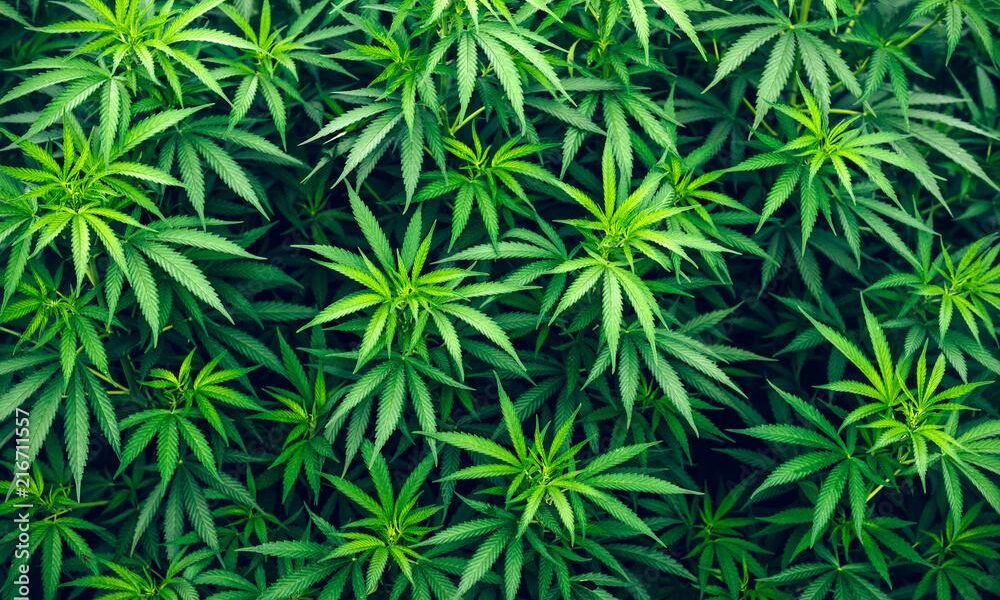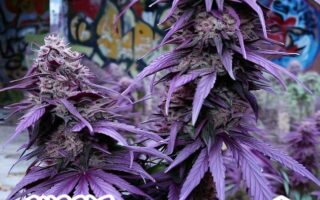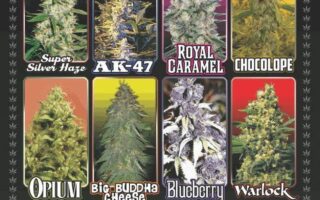Is Weed a Drug or Herb? Untangling the Green Mystique
In the nuanced landscape of natural remedies and recreational substances, few topics spark as much debate and curiosity as cannabis. Often referred to colloquially as “weed,” this plant has been revered for its therapeutic properties for centuries while simultaneously facing stigmatization as a controlled substance. As society grapples with evolving perceptions and legislation, the question persists: is weed merely an herb, a staple of folk medicine; or is it a drug, laden with the potential for misuse and addiction? This article seeks to explore the multifaceted identity of cannabis, examining its historical use, cultural significance, and the scientific distinctions between herbs and drugs. Join us as we delve into the green mystique that surrounds this intriguing plant, inviting you to reconsider what we truly understand about weed and its place in our lives.
Table of Contents
- Understanding the Dual Nature of Cannabis as a Drug and Herb
- Exploring the Historical Context of Cannabis Use
- The Impact of Legalization on Perceptions and Uses of Cannabis
- Cultivating Cannabis: Best Practices for Herbal and Medicinal Applications
- Q&A
- In Retrospect
Understanding the Dual Nature of Cannabis as a Drug and Herb
The contentious debate surrounding cannabis often hinges on its identity as both a drug and an herb, each classification bearing distinct implications. As an herb, cannabis has a rich history steeped in traditional medicine and agriculture, with its healing properties recognized across various cultures. Users have relied on its natural elements for wellness, leveraging components like cannabinoids and terpenes. This connection to nature fosters an appreciation for the plant as a holistic remedy, appealing to those who prefer organic alternatives over synthetic medications. In this light, herb enthusiasts emphasize its potential for therapeutic use without the stigma often associated with pharmaceuticals.
Conversely, cannabis’s classification as a drug transforms the conversation to one of regulatory, legal, and health implications. When viewed through this lens, cannabis is recognized for its psychoactive properties, which can produce effects such as euphoria or relaxation, significantly shaping user experience. This dual role prompts scrutiny over aspects like dosage, administration, and potential for abuse. Regulatory frameworks are continuously evolving to address these concerns, impacting how cannabis is perceived, marketed, and utilized in both recreational and medical contexts. Thus, understanding cannabis as both a drug and an herb is essential for navigating the multifaceted landscape of its use in contemporary society.
Exploring the Historical Context of Cannabis Use
The journey of cannabis through history is as fascinating as it is complex. Used for thousands of years across various cultures, cannabis has often served dual roles as both a medicinal herb and a recreational substance. In ancient China, cannabis was recognized primarily for its medicinal properties, utilized in traditional remedies for ailments ranging from pain relief to digestive issues. Meanwhile, in regions such as the Middle East and India, cannabis was integrated into spiritual practices and social rituals, enjoying a revered status. Notably, historical texts illustrate its presence in religious ceremonies, highlighting how its role transcended mere recreation, fostering communal bonds and deeper self-exploration.
As societal views evolved, so did the classification of cannabis. In the 20th century, a shift occurred as cannabis was increasingly viewed through the lens of prohibition, often characterized as a dangerous drug rather than a benign herb. This perception significantly impacted legislation and public opinion, leading to widespread stigmatization. However, despite challenges, the resilience of cannabis as a cultural and medicinal staple is evident in modern times. Many are now revisiting its historical context, engaging in conversations about its value, benefits, and the intricate relationship that humanity shares with this multifaceted plant. To illustrate this ongoing evolution, consider the following table outlining key moments in cannabis history:
| Year | Event |
|---|---|
| 2737 BC | Earliest recorded use in China for medicinal purposes. |
| 1000 AD | Introduction in India for spiritual and recreational uses. |
| 1900s | Rise of the prohibition movement in the Western world. |
| 1996 | California becomes the first state to legalize medical cannabis. |
| 2020s | Growing acceptance and legalization across various states and countries. |
The Impact of Legalization on Perceptions and Uses of Cannabis
The legalization of cannabis has triggered a significant shift in societal attitudes toward this once stigmatized plant. As it moves from underground to mainstream, perceptions are evolving, driven by factors such as education, media portrayal, and personal experiences. People now view cannabis less as a dangerous drug and more as an herb with potential benefits. This changing perspective is illustrated by a growing acceptance among various demographics, particularly among younger generations who see cannabis as a part of wellness culture rather than merely a recreational substance. The stigma that historically surrounded it is gradually lifting, allowing for open discussions about its uses and effects.
Moreover, legalization has influenced how individuals utilize cannabis in their daily lives. From therapeutic applications to creative expression, people’s engagement with cannabis is becoming more nuanced. With increasing access, users are finding inspiration in different forms of consumption, such as edibles and oils, alongside traditional smoking. The following insights highlight the evolving uses of cannabis post-legalization:
- Medicinal Use: Recognition of cannabis as a treatment option for various ailments, including chronic pain and anxiety.
- Culinary Exploration: Cannabis-infused food and beverages are gaining popularity, merging culinary arts with cannabis culture.
- Social Settings: Cannabis is increasingly integrated into gatherings and events, valued for its communal and relaxing properties.
| Aspect | Pre-Legalization | Post-Legalization |
|---|---|---|
| Perception | Stigmatized, illegal | Normal, legitimate |
| Usage | Recreational, underground | Medicinal, culinary, social |
Cultivating Cannabis: Best Practices for Herbal and Medicinal Applications
Cultivating cannabis for herbal and medicinal applications requires a nuanced understanding of its biology and distinct growing conditions. Selecting the right strain is crucial, as different varieties offer varying cannabinoid profiles, flavors, and therapeutic effects. The following best practices will help ensure a successful harvest:
- Soil Quality: Utilize well-draining soil rich in organic matter to support healthy root development.
- Proper Lighting: Whether growing indoors or outdoors, provide adequate and appropriate light conditions to optimize growth and flowering stages.
- Watering Techniques: Establish a consistent watering schedule, ensuring plants receive sufficient moisture without over-saturating the roots.
- Pest Management: Implement organic pest control methods to maintain plant health without harsh chemicals.
- Harvest Timing: Monitor trichome development to determine the ideal harvest time for maximum potency and efficacy.
In addition to cultivation techniques, understanding the medicinal applications of cannabis can significantly enhance its therapeutic potential. Cannabis is rich in cannabinoids such as THC and CBD, each offering various health benefits. Consider the following benefits when exploring its herbal applications:
| Cannabinoid | Primary Benefit |
|---|---|
| THC | Alleviates pain and nausea |
| CBD | Reduces anxiety and inflammation |
| CBG | Promotes neuroprotection |
| CBC | Enhances mood and cognitive function |
By integrating these cultivation practices with an understanding of the cannabinoid benefits, growers can maximize both yield and therapeutic outcomes, making cannabis plants valuable assets in the realm of herbal medicine.
Q&A
Q&A: Is Weed a Drug or Herb?
Q1: What exactly is weed?
A1: Weed, commonly known as marijuana, cannabis, or pot, is the dried flowers and leaves of the Cannabis sativa plant. It has been used for centuries for both medicinal and recreational purposes. Depending on its use, the classification of weed can vary greatly.
Q2: How is weed classified as a drug?
A2: Weed is classified as a drug primarily because it contains psychoactive compounds, most notably tetrahydrocannabinol (THC). When ingested, THC interacts with the brain’s cannabinoid receptors, producing effects that can alter mood, perception, and consciousness. As such, it is often regulated by governments like other controlled substances.
Q3: In what context is weed considered an herb?
A3: In the context of herbal remedies, weed can be considered an herb due to its botanical origin. Herbs are typically defined as plants with beneficial properties, and cannabis has been used for its anti-inflammatory, analgesic, and anti-anxiety effects in traditional medicine. Many herbalists advocate for the use of cannabis in its natural form for therapeutic purposes.
Q4: Are there differences between drug and herb forms of weed?
A4: Yes, indeed! The distinction largely lies in how weed is processed and used. As a drug, it is often manufactured into concentrated forms such as oils, edibles, or pills, specifically targeting medicinal effects or recreational highs. In contrast, when considered as an herb, it may be utilized in its whole plant form – dried flowers for teas, tinctures, or smoking, harnessing its full spectrum of compounds.
Q5: Can you be both a drug and an herb?
A5: Absolutely! The dual identity of weed as both a drug and an herb reflects our evolving understanding of its potential. Its classification can depend on cultural perception, legislative frameworks, and individual use. For some, it might signify a natural remedy, while for others, it signifies a recreational substance that requires careful moderation.
Q6: What about the legality of weed?
A6: The legality of weed is complex and varies significantly around the world. In some places, it’s legal for medicinal or recreational use, while in others, it remains entirely prohibited. This patchwork of laws influences how weed is viewed: as a regulated drug in some nations and a celebrated herb in others.
Q7: So, is weed a drug or an herb?
A7: The answer depends on context. Weed can be both a drug in terms of its psychoactive effects and a herb regarding its natural use and therapeutic properties. Ultimately, it’s shaped by personal perspective, cultural influences, and evolving societal norms surrounding cannabis consumption.
Q8: How should one approach the use of weed?
A8: Approach weed with mindfulness and education. Understanding its effects, potential benefits, and legal status in your area can provide clarity. Whether you view it as a drug, an herb, or a little of both, informed decisions lead to safer and more meaningful experiences.
In Retrospect
the classification of cannabis as a drug or an herb largely hinges on perspective—an exploration of semantics and context that reflects our evolving understanding of this fascinating plant. While some may argue that its psychoactive properties place it firmly in the drug category, others embrace its historical and botanical roots as an herb steeped in tradition and potential. As society continues to navigate these complexities, both views contribute to a richer dialogue about cannabis, its myriad uses, and the cultural narratives surrounding it. Whether seen as a remedy for ailments, a source of inspiration, or a controversial substance, cannabis remains a compelling subject, inviting us to reconsider our definitions and beliefs. Ultimately, the journey through this verdant landscape encourages open-mindedness, education, and a deeper appreciation of the natural world, where every plant tells a story waiting to be discovered.



